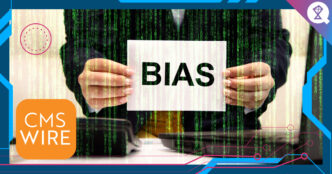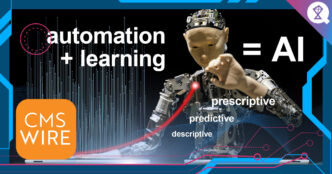
The Outperformance is Just the Beginning
The 40th anniversary of PROS. Coincidentally, we are back in Las Vegas again, where I began this annual ritual way back in 2019. And I will remember Outperform 2025 as one of my best.

The 40th anniversary of PROS. Coincidentally, we are back in Las Vegas again, where I began this annual ritual way back in 2019. And I will remember Outperform 2025 as one of my best.

Last time, I outlined what I believed to be the most important innovation behind DeepSeek that enabled them to train and deploy …more

In today’s highly volatile business environment, the adoption of artificial intelligence (AI) has become indispensable for the success of businesses. AI offers …more

There is absolutely no doubt that AI is going to play a pivotal role in shaping the future of work. Some even …more

As data scientists, we often treat the data given to us as the raw input. We seldom question where the data came from and how it was collected. Where did these pre-existing inherited biases come from, and can they be eliminated?

Emergent biases are not inherited from the training data. That means these biases can still emerge even when we have trained the machine-learning (ML) algorithms with a cleansed data set with no known biases.

AI bias problem is currently being thought of as a data problem. And to a large extent, if we can fix the biased data, we would’ve addressed most of the AI biases. However, not all biases are bad. In fact, biases are often introduced in training data to improve the performance of the trained model.

Today, most AI practitioners in the industry are treating AI bias as a data problem. To a large extent, if we can fix the biased data, we fix the AI bias problem. However, fixing the biased data is not the only way to address the problem.

Last month, I had the pleasure of talking to Hamish Taylor who is the former Head of Brands at British Airways, CEO …more

Today, XAI is proving that the infamous “black box problem” is really not a problem after all. Business leaders who continue to scapegoat the use of AI due to its black-box nature are essentially foregoing an efficient and reliable way to optimize their business decisions for something that is only a problem of the past.

What makes a black box model uninterpretable is just complexity, nothing more! And the black box problem is an inherent inability of our human brain to distill those complex models down to something simple enough for us to explain in English.

The fear for AI is even more imminent with the advent of large language model (LLM) like ChatGPT (OepnAI), LLaMA (Meta), LaMDA (Google), etc. What must be done to reassure employees, while still ensuring the business reaps the benefit of AI and evolve as necessary?

I’ve already shared a few posts on My Takeaways from my First AI/ML Conference in Morocco. So I thought I will have …more

To understand AI in ways that drive business, we must start with something that business is familiar with — business intelligence (BI). BI provides data and analytics to help business leaders make more informed decisions. Over the years, BI has evolved to include three basic types of analytics.